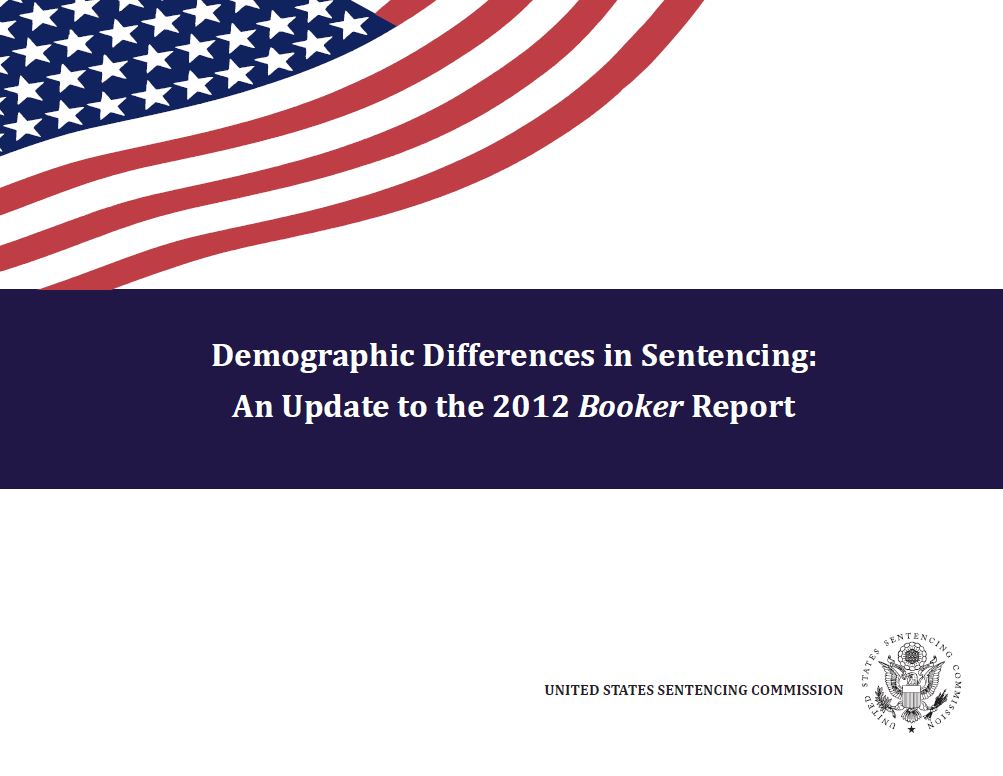Summary

The Commission once again updated its analysis by examining cases in which the offender was sentenced during the period following the 2012 report. This new time period, from October 1, 2011, to September 30, 2016, is referred to as the “Post-Report period” in this publication. Also, the Commission has collected data about an additional variable—violence in an offender’s criminal history—that the Commission had previously noted was missing from its analysis but that might help explain some of the differences in sentencing noted in its work. This report presents the results observed from adding that new data to the Commission’s analysis.
Related Reports:
- Influence of the Guidelines Report (December 2020)
- Inter-District Report (January 2020)
- Intra-City Report (January 2019)
- 2012 Booker Report (December 2012)
Key Findings
Consistent with its previous reports, the Commission found that sentence length continues to be associated with some demographic factors. In particular, after controlling for a wide variety of sentencing factors, the Commission found:
- Black male offenders continued to receive longer sentences than similarly situated White male offenders. Black male offenders received sentences on average 19.1 percent longer than similarly situated White male offenders during the Post-Report period (fiscal years 2012-2016), as they had for the prior four periods studied. The differences in sentence length remained relatively unchanged compared to the Post-Gall period.
- Non-government sponsored departures and variances appear to contribute significantly to the difference in sentence length between Black male and White male offenders. Black male offenders were 21.2 percent less likely than White male offenders to receive a non-government sponsored downward departure or variance during the Post-Report period. Furthermore, when Black male offenders did receive a non-government sponsored departure or variance, they received sentences 16.8 percent longer than White male offenders who received a non-government sponsored departure or variance. In contrast, there was a 7.9 percent difference in sentence length between Black male and White male offenders who received sentences within the applicable sentencing guidelines range, and there was no statistically significant difference in sentence length between Black male and White male offenders who received a substantial assistance departure.
- Violence in an offender’s criminal history does not appear to account for any of the demographic differences in sentencing. Black male offenders received sentences on average 20.4 percent longer than similarly situated White male offenders, accounting for violence in an offender’s past in fiscal year 2016, the only year for which such data is available. This figure is almost the same as the 20.7 percent difference without accounting for past violence. Thus, violence in an offender’s criminal history does not appear to contribute to the sentence imposed to any extent beyond its contribution to the offender’s criminal history score determined under the sentencing guidelines.
- Female offenders of all races received shorter sentences than White male offenders during the Post-Report period, as they had for the prior four periods. The differences in sentence length decreased slightly during the five-year period after the 2012 Booker Report for most offenders. The differences in sentence length fluctuated across all time periods studied for White females, Black females, Hispanic females, and Other Race female offenders.

